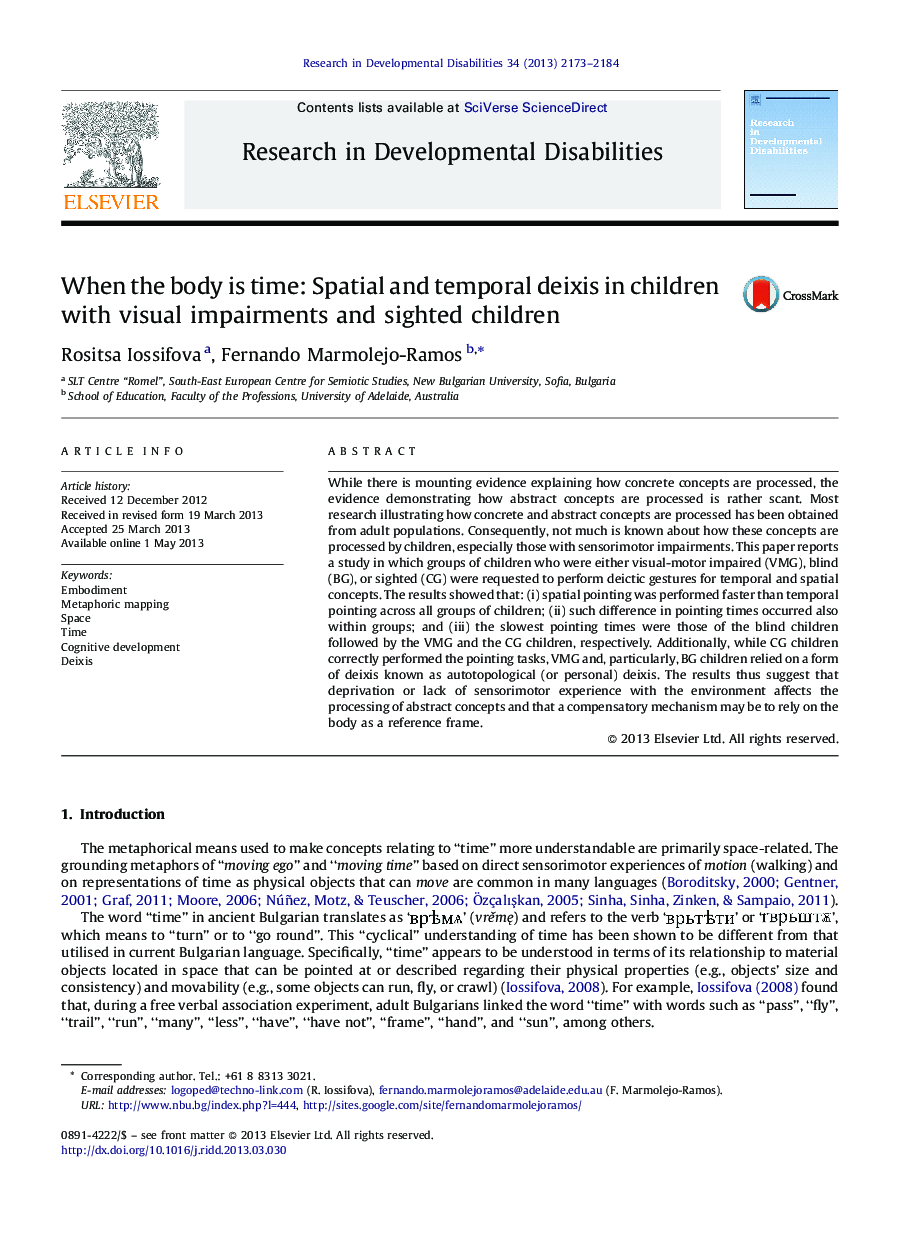| Article ID | Journal | Published Year | Pages | File Type |
|---|---|---|---|---|
| 371254 | Research in Developmental Disabilities | 2013 | 12 Pages |
•Blind and sighted children performed gestures for temporal and spatial concepts.•Spatial pointing was performed faster than temporal pointing.•Difference in pointing times occurred also within groups.•The own body becomes the reference frame in children with visual impairments.•Novel robust statistical methods were used to analyse the data.
While there is mounting evidence explaining how concrete concepts are processed, the evidence demonstrating how abstract concepts are processed is rather scant. Most research illustrating how concrete and abstract concepts are processed has been obtained from adult populations. Consequently, not much is known about how these concepts are processed by children, especially those with sensorimotor impairments. This paper reports a study in which groups of children who were either visual-motor impaired (VMG), blind (BG), or sighted (CG) were requested to perform deictic gestures for temporal and spatial concepts. The results showed that: (i) spatial pointing was performed faster than temporal pointing across all groups of children; (ii) such difference in pointing times occurred also within groups; and (iii) the slowest pointing times were those of the blind children followed by the VMG and the CG children, respectively. Additionally, while CG children correctly performed the pointing tasks, VMG and, particularly, BG children relied on a form of deixis known as autotopological (or personal) deixis. The results thus suggest that deprivation or lack of sensorimotor experience with the environment affects the processing of abstract concepts and that a compensatory mechanism may be to rely on the body as a reference frame.
